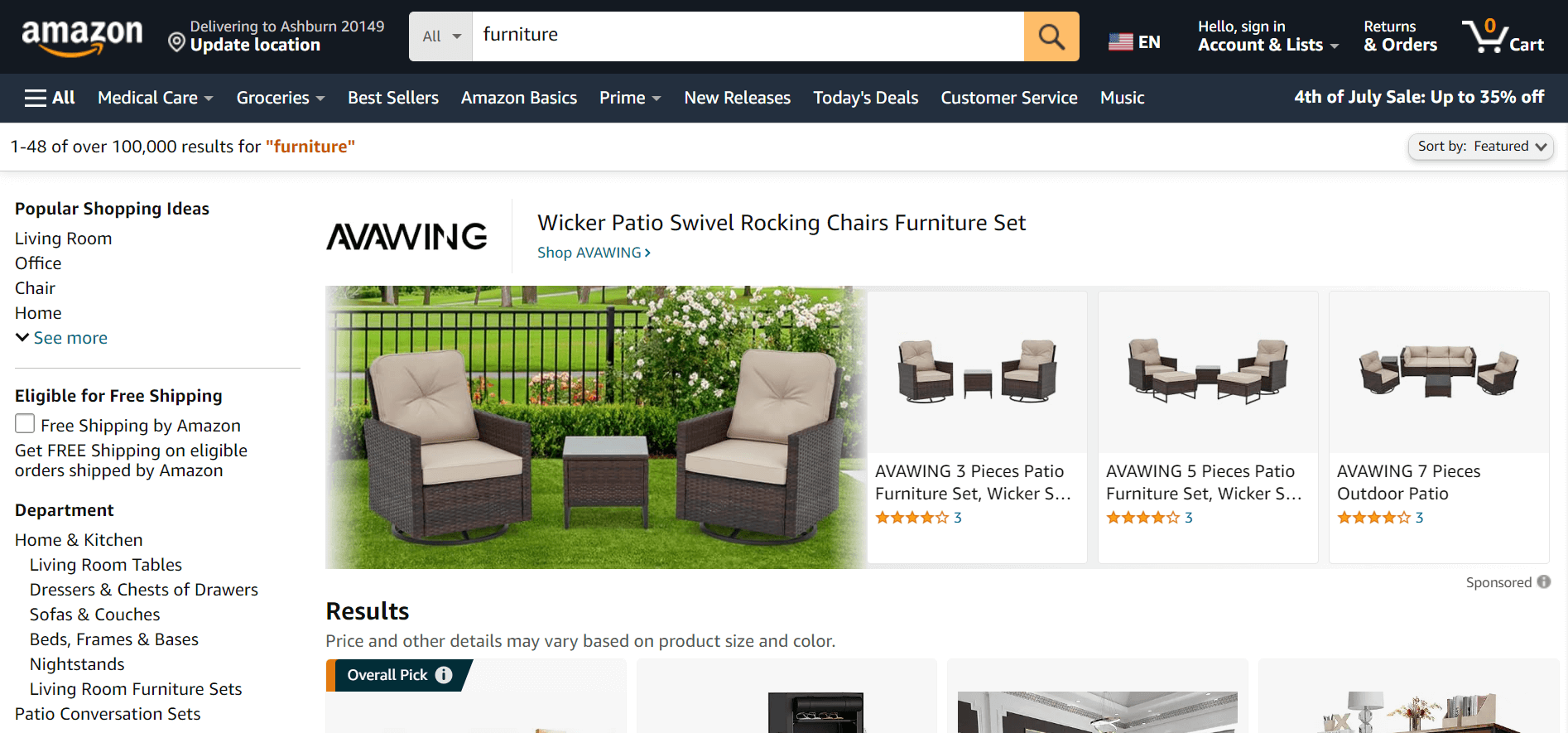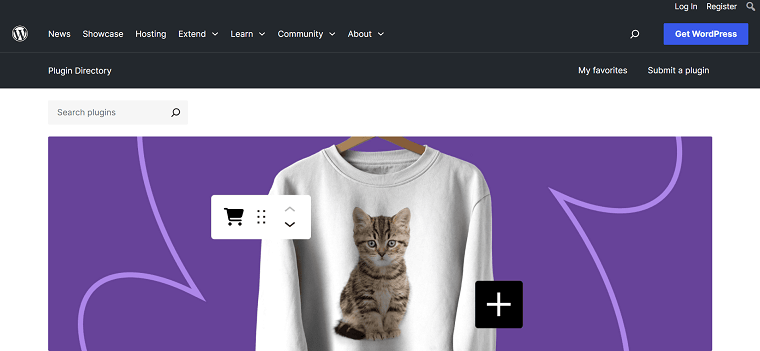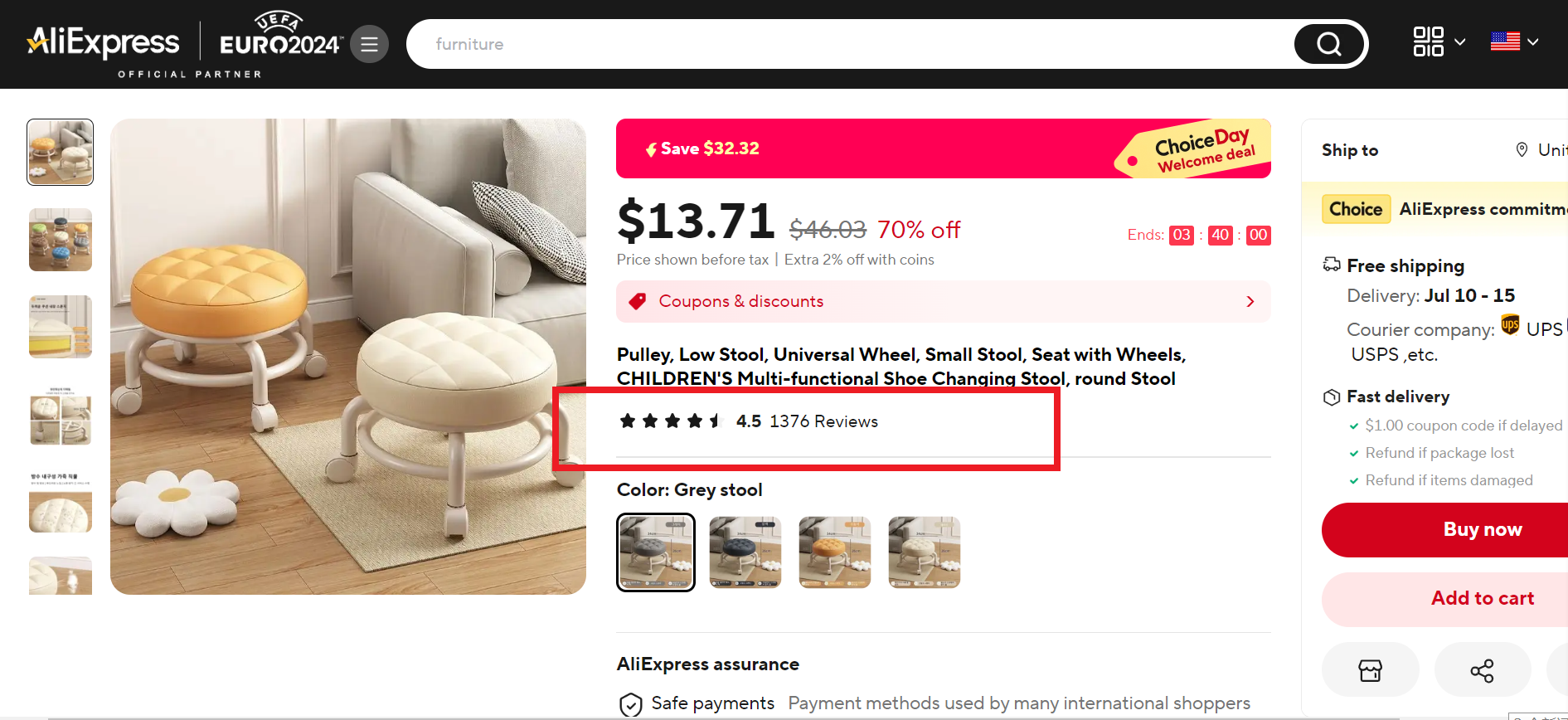Comprehensive Guide to Sell Furniture Online

Online stores can offer a wider range of styles to choose from, allowing customers to save time and energy. And with the decline of offline furniture stores, selling furniture online has become trendy, even furniture giants like IKEA have opened online stores. Selling Furniture online is absolutely a new trend in the furniture industry. It’s friendly to new beginners with high-quality goods and adequate online business knowledge.
Where to Sell Furniture
There are many e-commerce available now, here are some popular ones which suitable for the furniture business:
Amazon

Amazon is a trusted e-commerce platform known for its reliable seller central and secure payment systems. This trust can help alleviate customer concerns about purchasing furniture online. And because of this, Amazon has a massive global customer base, providing exposure to millions of potential buyers who actively search for furniture products.
Sellers have the option to utilize Amazon's Fulfilled by Amazon (FBA) service, through which Amazon manages storage, packing, shipping, and customer service. This choice can greatly streamline operations and enhance efficiency.
The drawback is that the threshold for opening a store on Amazon is relatively high, and the rules for operating a store are also complex. If you have sufficient funds to invest in your online business and the confidence to manage your store well, or you already set up your furniture brand, Amazon is a sensible choice.
Shopify

Compared to Amazon, Shopify has a much lower barrier. Shopify offers a user-friendly interface and intuitive tools that make it easy to set up and manage an online store without needing extensive operational knowledge.
Shopify focuses on following up on people's consumption habits. Shopify themes are responsive and optimized for mobile devices, providing a seamless shopping experience for customers on smartphones and tablets.
Moreover, Shopify offers 24/7 customer support via phone, email, and live chat, ensuring that sellers receive assistance promptly when they encounter issues or have questions. This is extremely friendly for new beginners since you can get help whenever you want.
The complaints of retailers about Shopify mainly lie in its fees. Shopify charges transaction fees on sales made through external payment gateways if sellers do not use Shopify Payments. These fees can add up and affect profit margins, especially for high-volume sales.
Etsy

The biggest advantage of Etsy is its distinctiveness. Etsy attracts a specific audience interested in handmade, vintage, and unique products, creating a niche market that sellers can tap into. Suppose you want to sell small and delicate home products, such as bedding, decorations, etc. Esty is advisable for you.
Setting up a shop on Etsy is straightforward, with user-friendly tools and templates that simplify the process of listing products and managing inventory. Etsy charges minimal listing fees and takes a small commission on sales, making it affordable for sellers to start and scale their businesses without significant upfront costs.
But Etsy is not applicable to all retailers. Due to the popularity of Etsy, sellers face competition from other shops offering similar exquisite products, requiring differentiation and unique marketing strategies. It’ll be tough if your products don’t have special designs.What’s more, Etsy shops have limited customization options compared to standalone e-commerce websites, restricting branding opportunities and making it challenging to establish a distinct brand identity.
Every platform has its pros and cons, you’d better make the decision based on your products and available funds. If you choose a platform that requires a subscription fee, subscribe for a week or a month first to minimize the possible loss in the initial stage. Don't subscribe to an annual membership at the beginning.
What Factors You Should Know
Although selling furniture online is profitable just like other online businesses, it also shares some risks. So before entering this industry, you need to clarify these factors one by one.
Low Sales Volume
Due to the relatively low demand for furniture products, especially larger items, some online furniture sellers are facing losses. You need to recognize that furniture such as sofas, beds, and dining tables, although valuable and profitable, is purchased infrequently by people. Therefore, in order to avoid low sales causing losses in the store, try to sell some small household items in the store, such as tableware, lighting fixtures, decorations, etc.
High Freight Cost

As mentioned earlier, many furniture items are relatively large, and even some small furniture items are heavy, making it difficult to provide freight reduction services like other online stores. This hinders online furniture sellers from selling their products far away.
To overcome this, if you are a big seller, you’d better establish logistics cooperation with the platform or choose large suppliers with warehouses in your target markets(such as Amazon's FBA). If your business scale is small, it is best to choose a supplier that is close to the target market and with low shipping costs.
Inconvenience of Returns and Exchanges
Since furniture products are difficult to return and exchange, and returns and exchanges can cause lots of losses to profits, you need to find ways to avoid this. Firstly, your product details page needs to provide accurate product information to avoid customer misunderstandings.
Secondly, customers should be clearly informed of the return and exchange rules before shipment. Furthermore, if the product only has some minor issues, you can choose to compensate the customer with some money instead of returning or exchanging the product.
It should also be noted that if your suppliers are unable to provide on-site installation services, it is best to record a detailed installation tutorial to avoid customers mistaking the product for unqualified due to incorrect installation methods.
How to Dropship Furniture
Now, if you are ready to start your furniture online selling journey, it’s time to learn a popular business model - dropshipping. Check the following steps to start your furniture dropshipping business.
Step 1: Product Research
Firstly, determine who your potential customers are. Are they homeowners, renters, businesses, or specific demographics like millennials or seniors? Understand their preferences, budget range, and shopping behaviors related to furniture.
After you have identified your target customers, research other dropshippers and online furniture retailers. Then you should analyze their product offerings, pricing strategies, shipping options, customer reviews, and overall market positioning. Besides your competitors, you can also use tools like Google Trends, social media insights, and industry reports to understand current and emerging trends in the furniture market.
Next, you can utilize the information and data you possess to decide on what types of furniture you want to offer (e.g., living room, bedroom, outdoor). In the process, remember to consider factors such as style (modern, traditional), material (wood, metal, upholstered), and sizes that appeal to your target market.
Step 2: Set Up an Online Store
Now that you know what to sell, it’s time to set up your online store to get started. The registration steps for each platform are different, but the items required for registration are roughly the same. You need a valid email, a phone number, and sometimes identity information is needed.
Once you finish registration, you need to complete the seller profile. In this step, you have to provide information about your store details, including legal store name, registered address, contact information, and payment information.
Find a Supplier
The next step is to select suppliers who have a good reputation for quality products, reliable shipping, and excellent customer service. This matters a lot in your business. Seek out reviews, testimonials, and industry certifications to assess their credibility. The simplest and most direct way is to look at the suppliers’ ratings and comments(For example, if you choose AliExpress as your supply platform, you’d better only take suppliers whose ratings are above 4 and with plenty of reviews into consideration).

Once you’ve selected some reliable suppliers, try to establish clear conversation channels with suppliers and communicate your expectations regarding product quality, shipping times, packaging requirements, and any specific instructions for handling orders.
If you consider some suppliers trustworthy, you can try to cultivate a strong partnership with suppliers based on trust, transparency, and mutual respect. Then, you’d better check in with suppliers regularly and seek ways to improve collaboration and efficiency with suppliers continuously.
Step 4: Apply a Dropshipping Tool
The next thing is to connect a dropshipping tool with your online store. Most dropshipping tools integrate seamlessly with popular e-commerce platforms like Shopify, WooCommerce, or Wix. Some tools even have available integration with some new and trendy platforms like TikTok. This integration simplifies the setup process and allows for easier management of your online store.
DSers, the AliExpress’s official partner, is a good option for you. With DSers Supplier Optimizer, you can access product catalogs from multiple suppliers. This allows you to easily browse and select products to add to your online store without needing to individually contact suppliers.

|
Find Better Supplier For Products DSers Supplier Optimizer - One click to filter out the most proper suppliers for your products |
DSers tool also streamlines the order fulfillment process. When a customer places an order on your website, the dropshipping tool can automatically send the order details to the supplier for processing and shipment. Automation helps dropshippers to manual faults and save time.

|
Place Orders to AliExpress In Seconds DSers Bulk Order - Place 100s of orders to AliExpress in a few seconds with a just few clicks |
Moreover, DSers offer stock management features that sync with suppliers' inventory levels. This helps prevent overselling and allows you to accurately display product availability to customers on your website.
Step 5: Market Your Products
Now that you have your items, an online store and an effective dropshipping tool. You still need to do some marketing to get the first order. The most commonly used one is social media marketing. You can utilize visual platforms like Instagram, Pinterest, and Houzz to showcase furniture in lifestyle settings, engage with followers, and drive traffic to your website. Use Facebook Ads and LinkedIn to target specific demographics or businesses looking for office furniture. Highlight promotions, customer testimonials, and new arrivals to generate interest.
Pay-per-click (PPC) advertising is also a normal choice. You can set up PPC campaigns on Google Ads targeting relevant keywords and geographic locations to appear in search results. Use ad extensions to showcase product features, prices, and promotions, or implement retargeting campaigns to reach users who have visited your website but didn’t make a purchase.
Pursuing influencer partnerships and collaborations has been very trendy recently. For furniture sellers, try to partner with interior designers, home decor influencers, or lifestyle bloggers who align with your brand. Have them showcase your furniture in their content or provide reviews to reach their audience.
Conclusion
Overall, selling furniture online is a new trend in the furniture industry. If your product is of high quality and operated correctly, it is profitable and promising. But if you want to achieve long-term stable returns, you need to develop a reasonable strategy, operate your store carefully, and actively market products, which requires continuous experimentation and accumulation of experience. Follow the steps above and you'll be primed to launch your online furniture business.
To get more dropshipping inspirations, please explore DSers blog.











 Company
Company
 Why Choose DSers
Why Choose DSers
 Blog
Blog
 Help Center
Help Center




 Live Chat
Live Chat